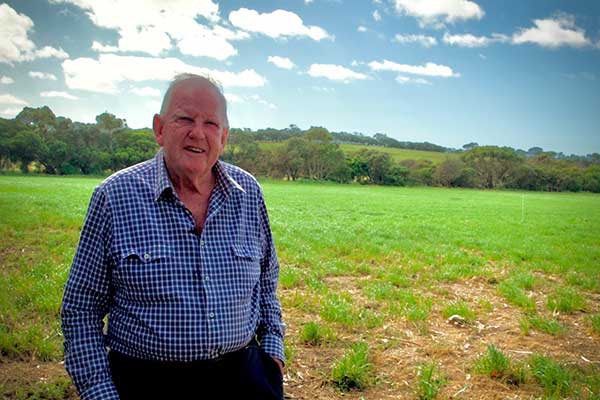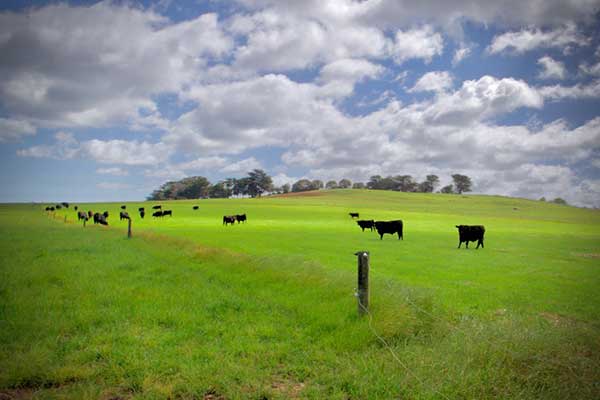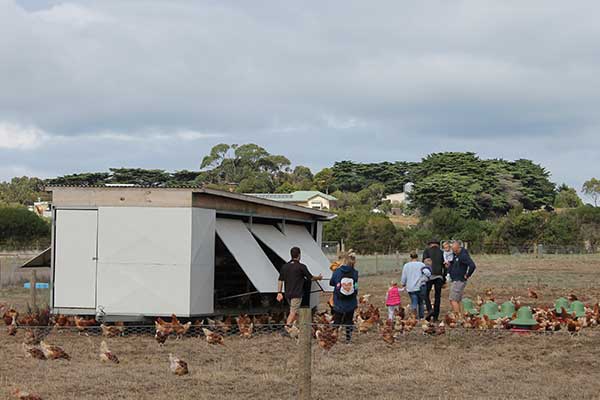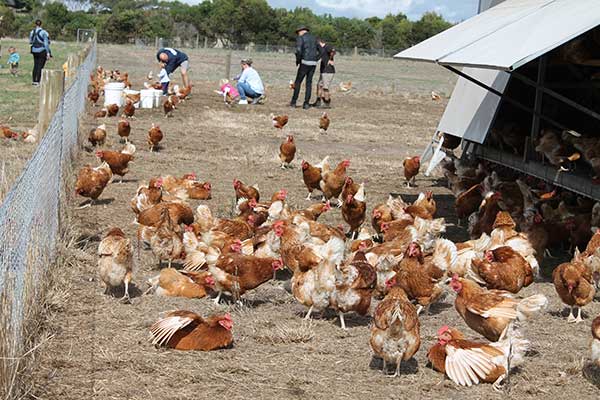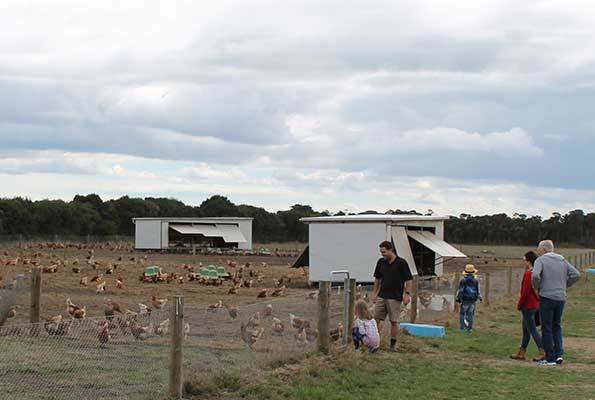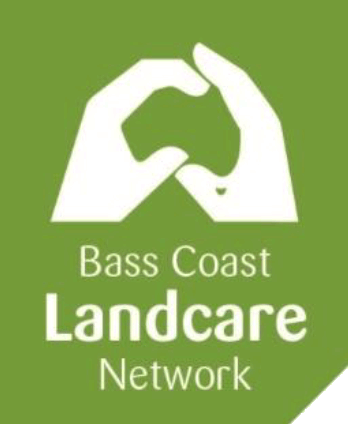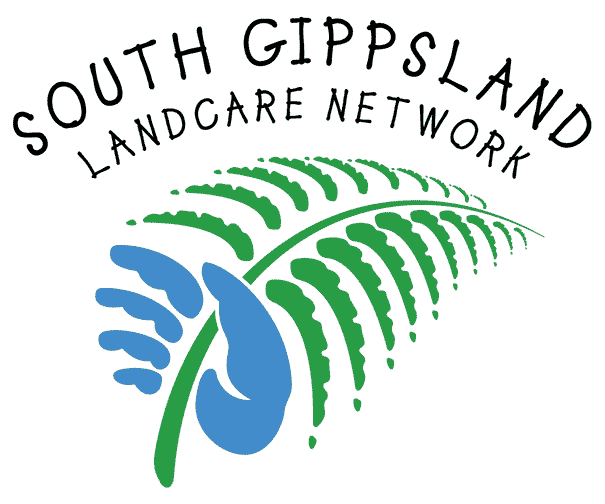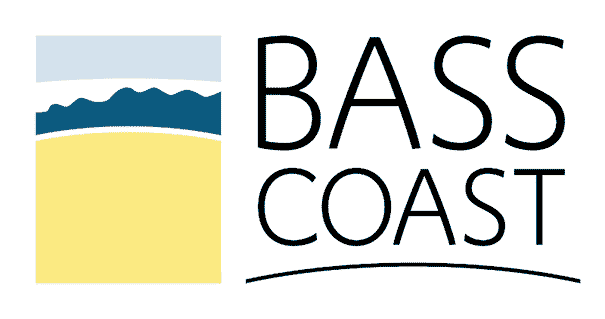Bimbadeen - A Carbon Neutral Farm
Farmers: Bob and Anne Davie, and family.
Enterprise: Mixed - beef, eggs, honey, carbon, farm stay, farm tours.
Catchment Management Region: Port Phillip and Westernport
Landcare Network: Bass Coast
LGA: Bass Coast Shire Council
Landform: Island
Soil Type: red volcanic, heavy black and loam/clay
Annual Rainfall average: 780 mm or 30.7 inches (Source- Bureau of Meteorology)
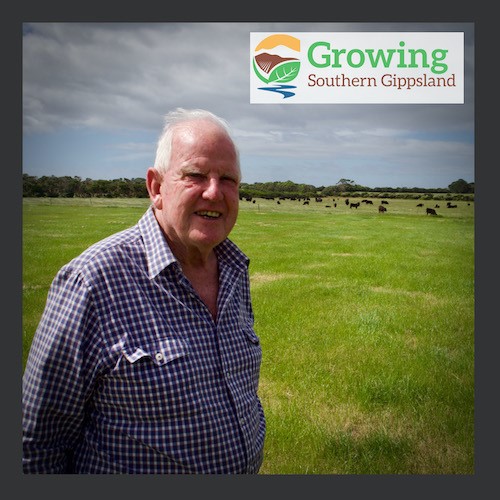
Bimbadeen is a carbon neutral farming operation run by Bob and Anne Davie and family, that is net zero carbon emissions. Established as a dairy in 1954 on 40 acres, Bimbadeen now comprises 340 acres on Phillip Island. From a production perspective, they have shifted their initial focus on dairy, to beef cattle, and then in recent years diversified into eggs, honey and agritourism. Bob and Anne have also been early adopters of and experimenters with carbon farming, specifically soil carbon. Their path to carbon neutrality and then carbon trading demonstrates how to reduce emissions, and increase carbon stored in the soil and the benefits of following this approach.
The Path to Carbon Neutrality
The Davies (Bob, Anne and family) have pursued carbon farming in a series of experiments on a 2.5-hectare paddock set aside for that purpose on the property. A range of crops have been sown and then used to fertilize the soil, including peas for nitrogen, Graza radish as its root system draws carbon deep into the soil, and then in December 2019 a heavy sowing of multiple species of grasses and clovers designed to obtain maximum carbon. The Davies see two benefits from carbon farming:
"The more carbon you have, the better your soil, and more moisture retention. So, you're improving your farm by improving your carbon, by growing carbon you improve your land, and it's a win-win situation. All farmers should do it. If farmers increased their organic carbon by two per cent, it would wipe out the greenhouse gas emissions of Australia of 533.7 million tonnes.”
This is an example of a recent carbon farming experiment at Bimbadeen. The Davie’s interest stretches back more than a decade. In 2009, the Davies worked with the Bass Coast Landcare Network on a case study, focussing on how they had begun to adapt to climate change. This was a part of the broader regional Agricultural Greenhouse Emissions project . Bass Coast Landcare Network worked with Bob and Anne to identify their ‘areas of concern’ and develop specific actions for the enterprise.
The following table summarises the areas of concern identified in that case study, and the actions taken: this process is a forerunner of the climate adaptation plans of the Growing Southern Gippsland project. The project also provided Bob and Anne with the knowledge and confidence to focus on their carbon neutral and soil carbon sequestration journey.
Southern Gippsland project. The project also provided Bob and Anne with the knowledge and confidence to focus on their carbon neutral and soil carbon sequestration journey .
| Areas of Concern | Action Taken |
|---|---|
|
|
The resulting plan was the first step towards carbon neutrality for the Davies. They began reducing greenhouse gas emissions and introduced carbon accounting to their enterprise management. Due to the success of this process, in July 2014 Bimbadeen became carbon neutral.
“Our efforts in sequestering carbon through innovative cropping trials and minimising waste has seen Bimbadeen declared Carbon Neutral”
Climate change has been identified by Bob and Anne as an important issue. In addition to increasing the amount of carbon captured in the soil, the Davies have reduced their carbon footprint by embracing renewable energy sources on the farm. They first explored how they could reduce greenhouse gas emissions on farm by participating in the national Greenhouse gas challenge. Involvement in this challenge kick started their journey to carbon neutrality. Beginning around 2010, Bimbadeen commenced investment in the use of solar and wind power options, to the point that now:
“All our pumps are solar. The whole of this farm is run by wind and solar.”
The use of recycled water from the Westernport Waters sewerage treatment plant in Ventnor also complements the carbon farming processes, providing irrigated water to numerous paddocks, including soil carbon demonstration paddocks.
Bob refers to the soil carbon trading procedure as “Carbon Insetting” which is the practice of reducing carbon emissions and achieving value within an enterprise supply chain. Unlike ‘Carbon Offsetting, which involves a process of compensating elsewhere for carbon dioxide emissions, insetting is a sustainable practice to reduce carbon footprints within an enterprise, to lock atmospheric carbon in soil or in trees. For farmers it means adapting and mitigating to reduce carbon emissions from all activities that support and maintain the farm.
Carbon insetting has been a growing aspect of the farm’s commercial operations:
“There is quite an income out there from growing carbon, in that you can increase your carbon on your farm, and you can trade your excess carbon above your baseline.”
The insetting process has been an important development arising from the challenge of becoming carbon neutral. It is a clear example of how to combine productivity, conservation and good land management practice.
The Insight
The Bimbadeen experience demonstrates how long-term planning and experimentation can work to improve the sustainability of the farm and enable financial prosperity. This carbon neutral project has evolved and developed over many decades. It involved experimenting, learning and working with experts and sharing the story of success. The achievement of carbon neutrality is notable and anticipates the aspirations of the industry .
Video
Website resources
www.seccca.org.au/project/agricultural-greenhouse-emissions-age-project/
carbonneutralonline.com.au/
bimbadeenphillipisland.com.au/
www.basscoastlandcare.org.au/uploads/8/9/8/3/89835233/adapting-to-climate-change.pdf
www.sbs.com.au/ondemand/video/1355315267990/going-places-with-ernie-dingo-phillip-island
www.carbonneutralonline.com.au
www.bullsemen.com.au/
See also:
www.sustainableaustralianbeef.com.au/case-studies
"Against the Grain: Fourteen farmers adapt to Climate Change" by Bill Hampel.
www.mla.com.au/research-and-development/Environment-sustainability/carbon-neutral-2030-rd/cn30/
Images
